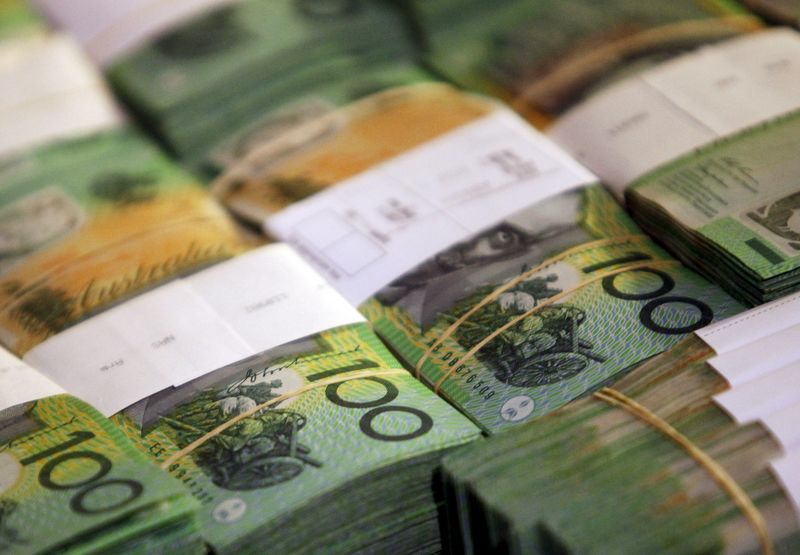By Cecile Lefort and Rebecca Howard
SYDNEY/WELLINGTON, April 21 (Reuters) - The Australian dollar held near 11-month peaks on Thursday as surging prices for oil and iron ore boosted risk appetite, while its New Zealand counterpart was repelled by stiff chart resistance.
The Australian dollar AUD=D4 was steady at $0.7805, having climbed to an 11-month peak of $0.7830 on Wednesday. It has gained more than 2 cents this week and made successive cyclical highs.
Next major resistance was found at $0.7849 and a break would target the May 2015 peak of $0.8164.
Driving the gains was a rousing recovery in iron ore, Australia's single biggest export earner, which hit 10-month highs amid a jump in steel prices in China.
The Aussie scaled a one-year peak against the Swiss franc AUDCHF=R , while the euro dropped to its lowest since July EURAUD=R . The common currency is down 7 cents so far this month, in part due to ultra-loose policy in Europe.
The European Central Bank holds its policy meeting later in the session and is widely expected to hold rates unchanged at record lows following last month's bold easing moves.
Across the Tasman sea, the New Zealand dollar NZD=D4 edged lower to $0.6961, having shed 1 percent on Wednesday. It lost momentum ahead of key resistance around $0.7075.
The kiwi was still up 0.7 percent for the week and only just off a 10-month top.
"The NZD has been pushed higher in the wave of more positive sentiment for commodities and commodity currencies, despite NZ's terms of trade actually falling," said Jason Wong, senior economist at BNZ, in a research note.
However, a series of strong economic data provided support and the Kiwi began to stabilise around $0.6970.
Data released on Thursday showed that in the 12 months through March 2016, visitor arrivals hit a record 3.26 million, up 10 percent from the March 2015 year. surveys by ANZ Bank also showed upbeat readings on job advertisements and consumer confidence. Zealand government bonds 0#NZTSY= eased, sending yields 2 basis points higher at the long end of the curve.
Australian government bond futures dropped to one-month lows, with the three-year bond contract YTTc1 off 6 ticks at 97.990. The 10-year contract YTCc1 shed 7.5 ticks to 97.4050 in a bearish steepening of the curve. The 20-year contract YXXc1 fell 5.5 ticks to 96.8500. (Editing by Jacqueline Wong)
